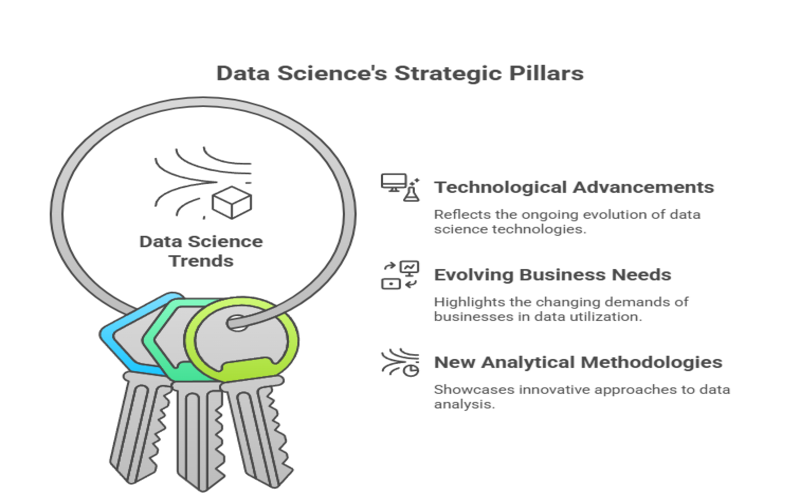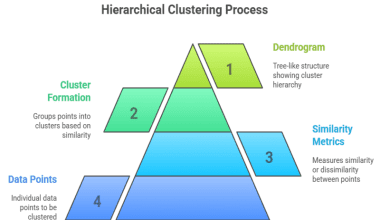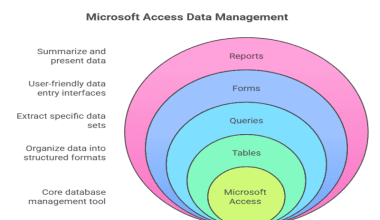Summary: In 2025, data science evolves with trends like augmented analytics, IoT data explosion, advanced machine learning, automation, and explainable AI. These innovations empower businesses to make faster, smarter decisions while ensuring transparency and scalability. Staying updated is vital for professionals and organizations to maintain a competitive edge.
Introduction – Why Data Science Trends Matter
Data science continues to be a cornerstone of innovation and decision-making across industries worldwide. As we move further into 2025, staying ahead of emerging data science trends is crucial for businesses, professionals, and organizations aiming to leverage data for competitive advantage.
Trends in data science reflect technological advancements, evolving business needs, and new analytical methodologies that shape how data is collected, processed, and utilized.
Understanding these trends helps companies optimize operations, improve customer experiences, and innovate products and services. For data scientists and aspiring professionals, awareness of these trends guides skill development and career growth in a rapidly changing landscape.
Key Takeaways
- Augmented analytics automates insights, making data accessible to non-experts.
- IoT devices generate massive real-time data, driving new analytics opportunities.
- Advanced AI and machine learning deepen data science capabilities and applications.
- Explainable AI ensures transparency, fairness, and trust in AI-driven decisions.
- Edge computing supports real-time processing, reducing latency in decentralized environments.
Top Data Science Trends in 2025
As data continues to grow exponentially and technology advances rapidly, the field of data science is evolving with new trends that are reshaping how businesses and professionals leverage data.
As data continues to grow exponentially and technology advances rapidly, the field of data science is evolving with new trends that are reshaping how businesses and professionals leverage data.
1. The Rise of Augmented Analytics
Augmented analytics is revolutionizing how data insights are generated by integrating artificial intelligence (AI) and machine learning (ML) into analytics workflows. This trend automates data preparation, insight generation, and explanation, making analytics more accessible to non-experts and speeding up decision-making processes.
By 2025, augmented analytics is expected to become a standard feature in business intelligence platforms, enabling organizations to derive deeper insights with less manual effort.
According to industry reports, augmented analytics tools are enhancing data science platforms by automating complex algorithms and embedding analytics directly into business applications, thus streamlining workflows and boosting productivity.
2. Explosion of Internet of Things (IoT) Data
The proliferation of IoT devices is generating unprecedented volumes of real-time data. Analysts predict over 27 billion IoT devices worldwide by 2025, nearly doubling the count from 2021.
These devices—from smart sensors in manufacturing to connected vehicles—produce continuous telemetry data that require advanced analytics for monitoring, predictive maintenance, and optimization.
The global IoT market is expected to reach $1.6 trillion by 2025, driven by industries investing heavily in data analytics to harness IoT’s full potential. This surge in connected devices is creating vast opportunities for data scientists to develop scalable models that process unstructured and streaming data efficiently.
3. Advanced Machine Learning and AI Integration
Machine learning remains the backbone of data science, but in 2025, its complexity and specialization are increasing. Deep learning, artificial neural networks, and reinforcement learning are gaining prominence, especially in AI-driven applications. Over 77% of AI-related job postings now require machine learning expertise, reflecting its critical role in data science jobs.
The demand for ML skills is accompanied by growth in related areas like MLOps (machine learning operations), which focuses on deploying and maintaining ML models in production environments. Natural language processing (NLP) is also advancing, enabling better understanding and generation of human language, although its growth is more modest compared to deep learning.
4. Automation of Big Data Analytics
Automation is transforming data science operations through Analytic Process Automation (APA), which combines predictive and prescriptive analytics with automated workflows. APA enables businesses to enhance efficiency, reduce costs, and accelerate insights by automating repetitive analytical tasks.
Nearly half of the executives surveyed acknowledge data analytics automation as crucial for business success, with platforms like Apache Hadoop, IBM Analytics, and SAP Business Intelligence leading the way. This trend is particularly impactful in industries requiring rapid, data-driven decision-making.
5. Explainable AI (XAI) and Ethical Data Science
As AI systems become more complex, the need for transparency and interpretability is growing. Explainable AI (XAI) focuses on making AI decisions understandable to humans, which is essential for trust, regulatory compliance, and ethical considerations.
In 2025, organizations are prioritizing XAI to ensure that AI models are fair, unbiased, and accountable. This trend is critical in sectors like healthcare, finance, and legal services, where decisions have significant consequences.
6. Data-as-a-Service (DaaS) and Cloud Integration
The shift towards cloud computing continues to accelerate, with Data-as-a-Service models enabling on-demand access to data and analytics tools. DaaS allows organizations to outsource data storage, processing, and analytics, reducing infrastructure costs and improving scalability.
By 2025, more companies will adopt hybrid and multi-cloud strategies to manage diverse data sources and leverage advanced analytics capabilities, fostering greater agility and collaboration.
7. Edge Computing and Real-Time Analytics
Edge computing brings data processing closer to the source—such as IoT devices—reducing latency and bandwidth use. This trend supports real-time analytics in applications like autonomous vehicles, smart cities, and industrial automation.
As more data is generated at the edge, data scientists must develop models that operate efficiently in decentralized environments, balancing accuracy with computational constraints.
8. Growing Demand for Versatile Data Scientists
The data science job market in 2025 favors professionals with a broad skill set. Around 57% of job postings seek versatile candidates with expertise across multiple domains, while 38% focus on domain specialists. This shift reflects the interdisciplinary nature of modern data science, requiring knowledge of statistics, programming, business acumen, and domain-specific insights.
Salaries remain competitive, with many roles offering between $160,000 and $200,000 annually, underscoring the high value placed on skilled data scientists.
9. Quantum Computing’s Emerging Role
Though still nascent, quantum computing is beginning to influence data science by promising exponential speed-ups in complex computations. Research and pilot projects in 2025 explore quantum algorithms for optimization, cryptography, and machine learning, potentially revolutionizing data processing capabilities in the near future.
Frequently Asked Questions
What is a Trend in Data Science?
A trend in data science refers to a significant shift or development in technologies, methodologies, or practices that influence how data is collected, analyzed, and applied. Trends often emerge from innovations in AI, machine learning, data engineering, or changes in business needs and regulatory environments.
What is the Data Science Trend in 2025?
Key data science trends in 2025 include the rise of augmented analytics, explosion of IoT data, advanced machine learning integration, automation of big data analytics, focus on explainable AI, adoption of Data-as-a-Service models, edge computing, and increasing demand for versatile data scientists. These trends reflect a move toward more automated, transparent, and real-time data-driven decision-making.
What are the 5 P’s of Data Science?
The 5 P’s of data science typically refer to key components that guide data science projects and strategies:
- Problem – Defining the business or research problem to solve
- Preparation – Collecting, cleaning, and organizing data.
- Process – Applying analytical methods and algorithms.
- Performance – Evaluating model accuracy and effectiveness.
- Presentation – Communicating insights and results to stakeholders.
- These elements ensure a structured approach to deriving value from data.
Is Data Science Trending?
Yes, data science continues to trend strongly in 2025. Demand for data science skills is growing globally at over 25% annually, driven by increasing data volumes, AI adoption, and digital transformation initiatives.
Job postings requiring data science expertise have surged by 23% from 2024 to 2025, with competitive salaries and expanding opportunities across industries.
Staying informed about these emerging data science trends will empower professionals and organizations to harness the full potential of data in 2025 and beyond. Whether you are a data scientist, business leader, or enthusiast, embracing these developments is essential to thrive in the evolving data-driven world.




